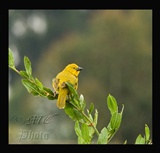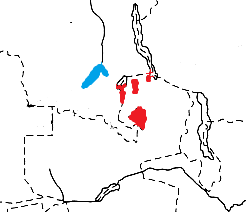Weaver species
Choose different species from drop-down list and press 'Go' button. See Full species list.Katanga Masked Weaver Ploceus katangae
IUCN: Least concern Discovery: 112Categories: wetland,
News items about species
Discovery
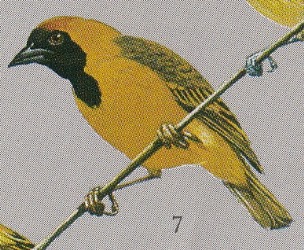
figure from Benson 1971b 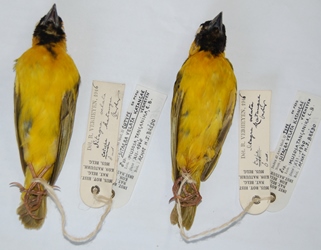
type specimens 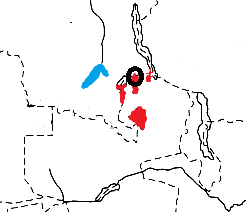
distribution, type locality circled IntroductionThe Katanga Masked Weaver was formally described by Rene K. Verheyen, a Belgian ornithologist.The Katanga Masked Weaver was collected by Hans J Bredo, a Belgian government entomologist, who also collected many birds in Central Africa in the 1930s. Bredo wrote many papers on insects, especially locusts. Bredo collected two specimens, both adult males, of the Katanga Masked Weaver, near the station at Musosa, where he was based. Musosa, NE of Lake Mwero, was part of the Belgian Congo (in Katanga Province) but now lies just within the borders of Zambia. The Katanga Masked Weaver was described as a subspecies of the Southern Masked Weaver by Verheyen. This has been followed by many authors initially, but it is considered a separate species by a growing number of authors. The Katanga Masked Weaver was first illustrated by Benson 1971b as a colour painting of a male. The next illustration of the species was published in Mackworth 1973a, showing both male and female. Scientific citationSitagra velata katangae Verheyen 1947a, Bull. Mus. Hist. Nat. Belge 23(10) p.3, Musosa, Belgian Congo.Meaning of nameskatangae, Named after Katanga Province, Belgian Congo (Shaba Province, Zaire).First English nameKatanga Masked Weaver (Howard 1984a).Alternate namesNone.CollectorHans J Bredo.Date collectedDec 1940.Locality collectedMusosa, Zambia.Type specimensThe types are in the Museum of Natural Sciences in Belgium (IRSNB_3161 and 3162). |
The above is based on Weaver Wednesday 2, a weekly series about the discovery of each weaver species.
This species text first appeared as
Weaver Wednesday [229] - Discovery [112]: Katanga Masked Weaver on 2016-11-02
1. Basic biology
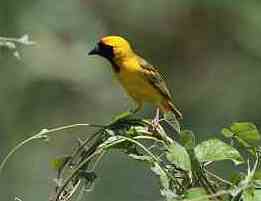
figure from Birdpix Distribution.
The Katanga Masked Weaver is found in DRCongo and Zambia (see map below, based on Birds of Africa). There are 2 subspecies:
Habitat. The Katanga Masked Weaver inhabits swampy areas, especially when breeding. When not breeding, it may move locally to join mixed bird parties in miombo woodland up to 7 km from water, while others remain in the swamps. Food.
The diet of the Katanga Masked Weaver is unrecorded but it probably feeds on seeds and insects.
Breeding. The Katanga Masked Weaver is probably polygynous, and it breeds in small colonies although solitary nests with 1 male per site also occur. The nest is kidney-shaped with the entrance below and no tunnel, being similar to that of Southern Masked Weaver. Nests are placed in reed and papyrus beds in swamps, or in bushes or trees near lakes. The eggs (1-2) are pale greenish or greenish blue, spotted with bright brown and light chestnut spots. |
The above is based on Weaver Wednesday, a weekly series about weaver species.
This species text first appeared as
Weaver Wednesday [113]: Katanga Masked Weaver on 2014-08-13
2. Breeding facts
| Pair bond presumably polygynous Breeding season Jan-Mar in DRCongo and Sept-Oct and Mar in Zambia Nest site in reeds or papyrus, or in tree or bush near water Nest building no information Colony size In small colonies, but solitary nests also noted Clutch size 1-2 eggs Egg colour pale greenish to greenish-blue with very fine brown or chestnut-brown spotting Egg size average size of nine eggs 19.2 x 13.5 mm (Zambia) Incubation no information Chicks and nestling period no information |
Breeding information based on Handbook of the Birds of the World, Vol. 15.
3. Photos of Weaver Nests
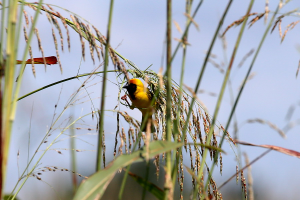 Vm 25074 | 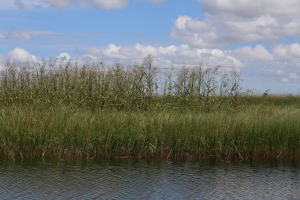 Vm 25073 | 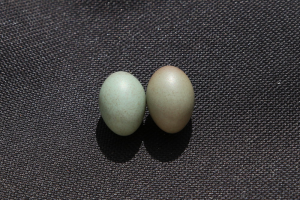 Vm 25072 | 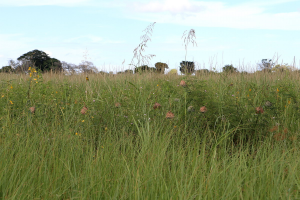 Vm 25071 |  Vm 12088 |
Thumb-nails of most recent PHOWN records - click on one to see its full record
See all PHOWN records for this species here.
PHOWN (Photos of Weaver Nests) provides valuable info on breeding distribution and colony sizes of weavers.
You can contribute by registering and submitting photos at Virtual Museum webpage.
4. Breeding distribution
Google map showing distribution (For species with small ranges you need to zoom in at the correct area to see the range):
yellow blob - range of weaver species; read more about this here.
![]() - PHOWN records with photos
- PHOWN records with photos
![]() - PHOWN records with no photos (Nest Record Cards, other records)
- PHOWN records with no photos (Nest Record Cards, other records)
![]() - Birdpix records
- Birdpix records
![]() - comments on out of range records, or interesting records
- comments on out of range records, or interesting records
![]() - type locality
- type locality
CLICK on the marker on the map to see individual record details.
5. Range changes
Not South African speciesThe above is based on Weaver Wednesday 3, a weekly series about range changes in South African weaver species.
This species text first appeared as
n/a








